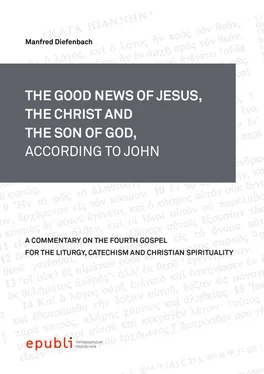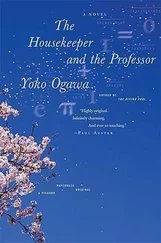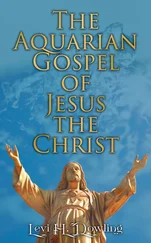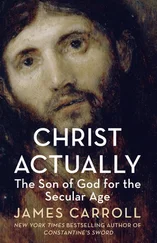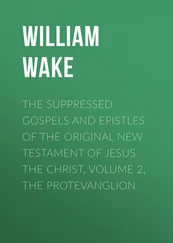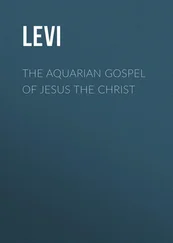- Second Comment by the Evangelist (vv. 21–22)
v. 21:The explanation of the Fourth Evangelist is in the light of Easter that the Risen “ body ” (in Greek “ sõma ”) of Jesus Christ is the new (spiritual) “ Temple ” (vv. 19b, 20b) where the Holy Spirit dwells fully (cf. John 1:32; 4:23–24; 1 Corinthians 3:16; 6:19).
v. 22:The Evangelist’s comment suggests at the beginning of his Gospel that the passion of Jesus is also the glory of Jesus Christ because of His Resurrection at Easter in the acceptance of the Hebrew Bible (in Greek “ graph é ” – Scripture/s). Similar to verse 17a, His disciples – including the so-called “beloved disciple” in John 13:23; 18:15–16; 20:2–10; 21:7, 20–24 – “ remembered ” (in Greek “ m ɩ mn é skoma ɩ ” in vv. 17a, 22b and in 14:26) all and reread the Hebrew Bible with a different interpretation (cf. 12:16; 20:9). In this way, like their Master Jesus, they were the “first Christian exegetical interpreters” of the Hebrew Bible 200, the Jewish “Holy Scripture(s)” and our so-called “Old/First Testament” (= OT), with its three parts, in Hebrew called “ Ta Na K”: the Torah, the prophets ( nebiim), the writings ( ketubim). Their task was to tell this “Good News” to everyone and everywhere. On this point His disciples had – and all people still – have to decide about “believing” (cf. 1:50) in Jesus of Nazareth in “word” and deed and in His Resurrection for our Resurrection of the bodies, saying YES or NO to this foundation of our Christian creed as a great mystery (cf. 20:30–31).
The essence of the verses 13/14–22 is summarized with the words of the German poet Friedrich Hölderlin 1770–1843 A.D.), Brod und Wein/Bread and Wine, written in the 1804 version:
“… er kam dann selbst und nahm des Menschen Gestalt an
ein Aergerniß aber ist Tempel und Bild” –
“he would come himself and take on human appearance
a vexation is temple and image”.
2.2.3 Third Comment by the Evangelist (vv. 23–25)
v. 23: The Fourth Evangelist states that Jesus often went to Jerusalem as a pilgrim for the Jewish feasts (cf., for example, 5:1; 6:4; 7:2; 11:55; 12:1; 13:1). Because of Exodus 23:14–17; 34:18–24; Deuteronomy 16:16–17 three feasts required all Jewish males to come to Jerusalem:
- The Feast ofPassover (Pessah/Pascha) and Unleavened Breadin John 2:13; 6:4; 11:55; 12:1; 13:1
- The Feast of Weeks(Shavuot) – maybe in 5:1
- The Feast of Tabernacles(Sukkot) in 7:2, 8, 10, 14, 37
- The Feast of Dedication at Jerusalem in 10:22.
Some Jews “ believed/ trust ed in ” Jesus – note the phrase “ believed in ( His ) name ( )” in v. 23b and in 1:12; 20:31 – because of His “ signs ” 201(in Greek “ seme ῖ a ” in v. 23c and in 6:2, 14; 7:31; 10:41; 12:18 or 16:30) during His first presence during the Passover feast.
vv. 24–25: However, “Jesus” did “not entrust himself /to/ them” because He “knew” (in Greek “gɩnósko” in vv. 24b, 25c) the mind of human beings (cf. Matthew 9:4 and Zechariah 8:17 ) so that the initial faith of some followers who simply see the “signs” was superficial. In John 19:6, 15 some of them will cry: “Crucify Him!”
The theological discourse (cf. vv. 1–21) between Nicodemus (cf. vv. 2c–g, 4b–c, 9b) and Jesus (cf. vv. 3b–d, 5b–8e, 10b–21c – note the introductory statement “ amen, amen, I say to you ” in vv. 3b, 5b, 11a) is structured as a dialogue (cf. vv. 2b–9) which “becomes a monologue” 202by Jesus (cf. vv. 10–21). Because of the same structure of Nicodemus’ questions in verses 4b and 9b – note the interrogative pronoun “ p õ s ” (= how) + “ dúnamaɩ ” (= can) + substantive + infinitive 203– the first discourse about the believing in “ the Son of Man ” (vv. 13b 2, 14b) in God’s “ Spirit ” (vv. 5c, 6b, 8a, e) with the help of the contrast “ earthly ” (v. 12a) and “ heavenly ” (v. 12c) and the Johannine “down-and-up-schema” (cf. v. 13a–b) is divided in two parts (cf. vv. 2b–8, 9–21 204): The first partof the conversation (cf. vv. 2b–8) between Nicodemus, the “ Pharisee ” (v. 1a) and “ teacher of Israel ” (v. 10b), and Jesus, the “ rabbi ” (v. 2c), is a reflection about the baptism on earth as a new born by the Holy Spirit. The second partof the Christological-soteriological discourse (cf. vv. 9–21) reflects the heavenly (cf. v. 13) view of “ the Son of Man ” in Jesus (cf. vv. 13–21) regarding God’s deeds of love for believers in Him (cf. vv. 13–17) and the alternative out for people who lack belief in Him (cf. vv. 18–21). This is in the form of a sequence of the words “ heavenly ” in verse 12c and “ Heaven ” in verse 13a, b 1which is connected with the messianic title “ Son of Man ” in verses 13b, 14b – “( ) eternal ( life )” in verses 15, 16d – “ Son ” (vv. 16b, 17a) – “ condemn ” (vv. 17b, 18a, b) 205– “ Son of God ” (v. 18c). The two Greek words with the same root, the verb “krí no ” (= to condemn) in verses 17b, 18a, b and the noun “krí sɩs ” (= judgement, condemnation, differentiation) in verse 19a, as well as the noun “ k ó smos ” in verses 16a, 17a, b, c, 19b introduce a new “(second) strophe” 206about the metaphoric of “ light ” in verses 19b, c, 20a, b, 21a and “ darkness ” in verse 19c in the form of a contrast for the believers (cf. vv. 16c, 18a) and non-believers in Jesus (cf. v. 18b, c) as their alternative : to “ love ” in verses 16a, 19c and to “ hate ” in verse 20a – to “ do truth ” in verse 21a as good “ works / deeds ” (v. 21b) as opposed to “ do evil / wicked ” (vv. 19d, 20a) “ works / deeds ” (vv. 19d, 20c).
A double setting (cf. vv. 22–24, 25–26a – including a commentary of the Evangelist in v. 24 – of the new scenic-dialogical story of John the Baptist’s testimony to himself (cf. vv. 27–30) and to Jesus (cf. vv. 31–36 207) who “ come from above ” (v. 31a) and “ has been sent by God ” (v. 34a) answered the question of his disciples (cf. v. 26b). We agree with Michael Theobald who sees some cross-references between the verses 31–36 and the verses 3c, 11c, d, 12a, 13b, 15, 16, 17a, 18b, 19a 208.
Microstructure of John 3
2.2.4 The Theological Discourse between Nicodemus and Jesus (3:1–21)
- The Setting (vv. 1–2a)
Who:Nicodemus, Jesus
Where :probably in Jerusalem (2:23)
When:at night (v. 2a)
v. 1:The topic of the transitional verses in 2:23–25 is the believing in Him because of His “ signs ” (2:23c–d – note the parallel with 3:2e–f). “Nicodemus is a representative spokesman of an inadequate faith” 209. Who is he? According to the Fourth Evangelist “ Nicodemus ” (in Greek “ N ɩ k ó demos ” 210in vv. 1b, 4a, 9a and in 7:50; 19:39) was a “ man of the Pharisees 211” – one of about 6,000 theologians and scribes/exegetes – who was a “ ruler/leader ” (in Greek “ á rchon ”) “ of the Jews ” (cf. 7:26, 48; 12:42) as a member of the Jewish Sanhedrin which had 71 members including the actual chief/high priest in Jerusalem until the destruction of the Temple under Titus, the son of Caesar Vespasian in August 70 A.D. Jesus titled him in verse 10b as “ Israel’s teacher ”.
Читать дальше
